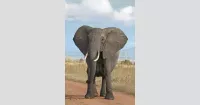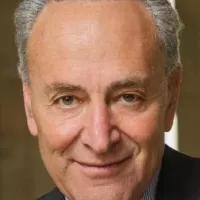The Columbus Zoo and Aquarium, a non-profit zoo near Columbus, Ohio, is renowned worldwide, largely due to Jack Hanna's promotion. It's located on the Scioto River's O'Shaughnessy Reservoir. The zoo was named the best in the US by USA Travel Guide in 2009 and Besties Readers Choice in 2012.
May 1905: The Zoo Opens
In May 1905, the first zoo in Columbus, known as "the Zoo," opened in Clintonville, operated by the Columbus Zoological Company.
October 1905: The Zoo Closes
In October 1905, the first zoo in Columbus closed for unknown reasons after only five months of operation.
1914: Original Construction of carousel
In 1914, the Mangels-Illions carousel was originally built for the former Olentangy Park in Clintonville.
1920: Zoo Conceived
In 1920, Harry P. Wolfe and the Columbus Mayor conceived the idea for the Columbus Zoo during a trip to the St. Louis Zoo.
1927: Riverside Park Opens
In 1927, the present Columbus Zoo opened as Riverside Park on 21 acres by the O'Shaughnessy Reservoir.
1932: First Building Completed
In 1932, the first building at the Columbus Zoo, housing lions and tigers, was completed.
1937: Olentangy Park closed
In 1937, Olentangy Park closed and the land and rides sold in 1938.
1937: Zoo Name Changed
In 1937, the zoo's name changed to the Columbus Municipal Zoo and utilized membership fees to fund its growth.
1938: Sale of rides
In 1938, the land and rides were sold after Olentangy Park closed in 1937, and the carousel was moved to Wyandot Lake.
1950: Zoo Struggles Financially
By 1950, the Columbus Municipal Zoo was struggling financially.
1951: City Takes Over Management
In 1951, the city of Columbus took over management of the Columbus Municipal Zoo.
December 22, 1956: Colo Born
On December 22, 1956, Colo, a western lowland gorilla, became the world's first captive-born gorilla at the Columbus Zoo.
1968: Reptile Habitat Opens
In 1968, the Reptile Habitat, a fully indoor facility, originally opened, housing numerous snakes, terrapins, lizards, and tortoises.
1970: Ownership Given to Zoological Park Association
In 1970, the city of Columbus gave up ownership of the Columbus Municipal Zoo to the Zoological Park Association, Inc., a non-profit organization.
1984: Mumbah Joins Columbus Zoo
In 1984, Mumbah joined the Columbus Zoo from an animal park in England.
1985: North America Trek Opens
In Spring of 1985, The "North America Trek" region opened.
1986: City Funding Ends
In 1986, the city of Columbus stopped providing funds from the city's general fund to the Columbus Zoo.
1992: Increased Visitation
By 1992, the Columbus Zoo attracted over 1.4 million visitors annually due to Jack Hanna's efforts.
1992: Zoo became involved in wolf breeding program
Since the zoo became involved in a breeding program for Mexican wolves in 1992, 29 pups have been born at their facility.
1993: Discovery Reef Opens
In 1993, Discovery Reef, an 88,000-US-gallon saltwater aquarium, opened at the Columbus Zoo.
1993: Jack Hanna Named Director Emeritus
In 1993, Jack Hanna was named director emeritus of the Columbus Zoo and continued to be the public face for the zoo.
1999: Carousel restoration
In 1999, the carousel was removed from Wyandot Lake and underwent a million dollar restoration before being moved to a new location at the zoo.
2000: Congo Expedition Opens
In 2000, the African forest region, "Congo Expedition", opened, showcasing animals from the Central African rainforest.
2000: Carousel added to the zoo
In the spring of 2000, the zoo added its restored 1914 Mangels-Illions carousel. This carousel had originally been built for the former Olentangy Park in Clintonville.
November 2003: Nocturnal Exhibit Opens
In November 2003, the nocturnal exhibit opened in the Australia region of the Columbus Zoo.
2003: Islands of Southeast Asia Opens
In 2003, the Islands of Southeast Asia region opened at the Columbus Zoo, creating an immersive experience for visitors.
July 28, 2004: One millionth rider celebrated
On July 28, 2004, the carousel celebrated its one millionth rider.
2004: Australia Region Expands
In 2004, the kangaroo walkabout, koala habitat, and Lorikeet Aviary opened in the Australia region of the Columbus Zoo.
2004: Voters Approve Expansion Measure
In 2004, voters passed a measure to raise an estimated $180 million to expand the Columbus Zoo over 10 years.
2006: Purchase of Wyandot Lake
At the end of 2006, the zoo purchased Wyandot Lake.
2006: Asia Quest Opens
In 2006, the Asia-themed region, "Asia Quest," opened in two phases at the Columbus Zoo.
March 2007: Fluffy on Display
In March 2007, Fluffy, the Guinness World Records holder for the longest snake in captivity, was put on display at the Columbus Zoo.
September 2007: Acquisition of Fluffy the snake
In September 2007, the Columbus Zoo purchased Fluffy, a large snake, from her owner, and she was put on permanent display.
May 2008: Opening of Jungle Jack's Landing
In May 2008, "Jungle Jack's Landing" opened alongside Zoombezi Bay, featuring 14 rides and attractions, including the Sea Dragon roller coaster.
May 2008: Opening of Zoombezi Bay
In May 2008, the water park Zoombezi Bay opened with 17 major slides and attractions.
2008: New Entrance Opens
In early 2008, a new entrance to the Columbus Zoo was constructed along the relocated Powell Road.
June 28, 2009: Jeff Swanagan Dies
On June 28, 2009, Jeff Swanagan, the executive director of the Columbus Zoo, died at the age of 51.
November 20, 2009: Dale Schmidt Named Executive Director
On November 20, 2009, Dale Schmidt, the zoo's chief operating officer, was named executive director of the Columbus Zoo.
2009: USA Travel Guide Names Columbus Zoo Number One
In 2009, the USA Travel Guide named the Columbus Zoo the number one zoo in the United States.
May 2010: Polar Frontier Opens
In May 2010, the "Polar Frontier" region opened at the Columbus Zoo, featuring animals native to colder climates.
October 26, 2010: Death of Fluffy the snake
On October 26, 2010, Fluffy, an 18-year-old, 300-pound snake, died at the zoo. A necropsy revealed a tumorous mass on one of her ovaries.
2010: Zoo provided grants
In 2010, the Columbus Zoo and Aquarium conservation program provided more than $2 million worth of grants to support conservation projects worldwide. These monies come from fundraisers, visitor donations and privately raised funds.
May 18, 2012: Gorilla Mumbah Dies
On May 18, 2012, Mumbah, one of the Columbus Zoo's gorillas, died of heart failure at the age of 47.
June 2012: Stingray Bay Opens
In June 2012, Stingray Bay opened before becoming part of the Adventure Cove region.
2012: Besties Readers Choice Ranks Columbus Zoo Number One
In 2012, Besties Readers Choice ranked the Columbus Zoo as the number one zoo.
2013: Third Polar Bear Added
In 2013, the Columbus Zoo added a third polar bear to the Polar Frontier exhibit.
2014: Polar Frontier Expanded
In 2014, the Columbus Zoo further expanded the Polar Frontier exhibit.
November 6, 2015: Polar Bear Cub Nora Born
On November 6, 2015, the polar bear Aurora gave birth to Nora, the first polar bear born and raised at the zoo since the opening of Polar Frontier.
January 2017: Colo Dies
In January 2017, Colo, the world's first captive-born gorilla, died at the Columbus Zoo at the age of 60.
2019: Tasmanian Devil Exhibit Opens
In 2019, the Tasmanian devil exhibit opened in the Australia region of the Columbus Zoo.
July 2020: Adventure Cove Opens
In July 2020, "Adventure Cove" opened at the Columbus Zoo.
2020: Jungle Jack's Landing Renamed
In 2020, "Jungle Jack's Landing" was renamed to "Rides At Adventure Cove" to tie into the neighboring Adventure Cove area of the Columbus Zoo and Aquarium which opened for the first time on the same year.
2020: Hanna Ends Marketing Campaigns
Until 2020, Jack Hanna continued to be the public face for the Columbus Zoo in its marketing campaigns.
October 7, 2021: Columbus Zoo Faces Loss of Accreditation
On October 7, 2021, it was announced that the Columbus Zoo was set to lose its Association of Zoos and Aquariums accredited status due to financial mismanagement and animal endangerment.
December 2021: Tom Schmid Becomes President and CEO
In December 2021, Tom Schmid became the president and CEO of the Columbus Zoo.
December 2021: Accreditation Appeal Denied
In December 2021, the Columbus Zoo's appeal to maintain its accreditation was denied, with an option to reapply in autumn 2022.
2022: Reapplication Option
In December 2021, when the Columbus Zoo's appeal to maintain its accreditation was denied, it was granted an option to reapply in autumn 2022.
March 2023: Zoo Regains AZA Accreditation
In March 2023, the Columbus Zoo regained its AZA accreditation.
June 2025: North America Trek Renovation Reopens
In June 2025, the first phase of the North America Trek region is scheduled to reopen after extensive renovation.
Mentioned in this timeline
The United States of America is a federal republic located...
California is a U S state on the Pacific Coast...
Africa is the second-largest and second-most populous continent comprising of...
Australia officially the Commonwealth of Australia is a country encompassing...
Florida a southeastern U S state boasts the longest coastline...

Elephants are the largest land animals on Earth with three...
Trending
5 days ago Iran Faces Severe Drought, Tehran Water Cuts Planned, Evacuation Considered Amid Crisis
35 minutes ago Kysre Gondrezick makes history as first Black athlete Playboy Playmate, fans react.

2 hours ago Southern California Braces for Intense Storm: Flash Floods, Mudslides, and Tornadoes Possible

2 hours ago Dariush aims to surpass Oliveira; Saint Denis seeks perfection at UFC 322.
2 hours ago Xbox Game Pass Adds New Games, Including Pigeon Simulator, in November 2025
2 hours ago Cathay Pacific Faces Competition to Fiji, Resumes Adelaide Flights with A350.
Popular

Nancy Pelosi is a prominent American politician notably serving as...

Chuck Schumer is the senior United States Senator from New...

Bernie Sanders is a prominent American politician currently serving as...
Nicholas J Fuentes is a far-right political commentator and activist...

Candace Owens is an American political commentator and author known...

XXXTentacion born Jahseh Dwayne Ricardo Onfroy was a controversial yet...